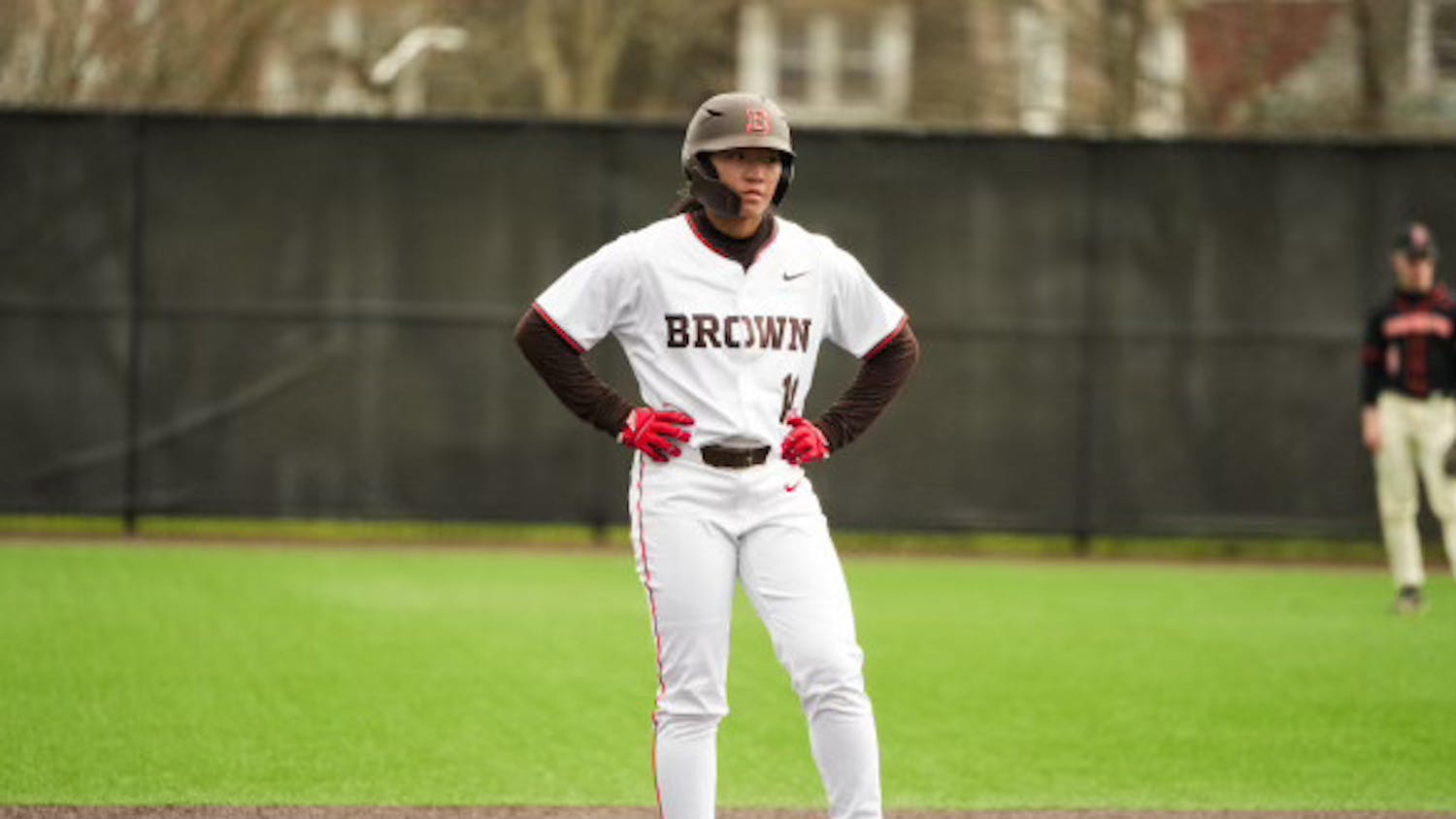Nationally televised Friday night games have proven unkind to the Dartmouth football team. Since the implementation of this recent invention in the Ivy League’s schedule template, the Big Green’s only two losses have come on the end of the weekday.
Last year, it was the backbreaking, come-from-behind, 14-13 loss against Harvard University in one of Dartmouth’s biggest games in recent memory. This year, after a strong 2-0 start that allayed some doubts over replacing a mass 2015 senior exodus, the Friday night loss wasn’t particularly close. The University of Pennsylvania — who shared the Ivy title last year with Dartmouth — came to Hanover, dominated early and often, and left with a decisive 37-24 victory, as the Big Green got a stinging reality check in its Ivy League season opener.
Line of scrimmage battle
In football, only one unit — the offensive line — on either side of the ball is missing from a traditional statsheet. So when an offensive line receives plaudits from players and coaches from both its own team and its opponent after a game, it merits much more recognition than it usually gets.
Penn quarterback Alek Torgersen credited the Quakers’ offensive line with doing a fantastic job up front.
“You can’t get this won or started without them. They had great push,” Torgersen said. “It mainly starts up front.”
In explaining what let the offense and running game flourish, Torgersen’s teammate running back Tre Solomon also immediately went to the offensive line.
“[Dartmouth’s] strength is definitely their defensive line, they have a really good motor up front,” Solomon said. “It was just all about being able to maneuver and get through the line.”
When asked about what contributed most to the Big Green’s first loss at home in nearly two years, head coach Buddy Teevens ’79 immediately stressed both offensive and defensive lines in the very first few words of his reply.
“I thought [Penn’s offensive line] did a great job against our defensive front,” Teevens noted. “They played physically, and up front they did a real good job of moving our people.”
From the very first drive and throughout the rest of the night, the Quakers’ offensive line won the battle at the line of scrimmage. Not only did it give Torgersen ample time to throw, but most notably Penn’s front five opened up massive running lanes for the rushing attack, paving the way for a balanced, overpowering Penn offense.
Successful first down plays off the line opened up holes and led to short amounts of yardage needed on second and third downs. Whenever Dartmouth seemed to start getting penetration up front, Penn’s offensive line rammed the defense backward, allowing its runners to puncture through the Big Green’s front seven.
Penn offensive fluidity
It naturally followed from the O-line play that Penn saw plentiful opportunities on the ground and in the air, of which they took full advantage. In an absolutely clinical showing, the Quakers marched down the field and scored on each of its first four possessions; the first one came on the opening drive of the night to silence the Blackout-themed crowd.
Penn’s early course toward victory established an eerily familiar tone. One year ago, it was Dartmouth who authoritatively leapt out ahead of Penn as visitors, scoring on its first four possessions during the team’s 2015 meeting and winning by a 21-point margin. This year, the tables turned and just like last year, the contest effectively ended early.
Balance defined and helped guide Penn’s dominant offensive play, as the Quakers picked apart the Dartmouth defense in all aspects. After a quarter of action, an even offensive distribution consisted of 86 rushing yards and 84 passing ones, furnishing a +7 first down margin by halftime that lasted for the remainder of the contest. Torgersen and Solomon alternated in recording touchdowns, and by the end of the night the backfield duo was responsible for all five for Penn.
Heneghan & company struggle
At times on Friday, it seemed Dartmouth quarterback Jack Heneghan ’18 might have hit his passing groove. Finding ways to move the ball with short, quick throws, Heneghan developed a nice rapport with underclassmen Hunter Hagdorn ’20 and Drew Hunnicutt ’19, who collectively had just under 200 receiving yards. But these positives were overshadowed by a passing game that couldn’t settle into a rhythm against Penn, which seemed off kilter for the first three (competitive) quarters.
Much of the struggle had to do with the burden of keeping up with Penn’s offensive onslaught on the other side of the ball. After the offense failed to develop anything its first time out, it already found itself in a 14-0 hole the next time it stepped on to the field. Putting points on the board in two of its four first half possessions just wouldn’t suffice.
Heneghan’s mobility played a key role in the season-opening victory against the University of New Hampshire. He netted 80 yards on 14 carries against the Wildcats, but this aspect of his game was notably absent against Penn as well as against the College of the Holy Cross the week before. The short passes allowed Dartmouth to move upfield, but not enough deep balls tested the Penn secondary. At a few different points on Friday, passes were thrown behind receivers or beyond their reach. Teevens recognized some of the challenges his quarterback faced, but remained bullish on Heneghan’s play.
“[On a few passes], we had an open guy and the [ball] was [thrown] just behind. We’re off with the throw or we’re off with the route, in terms of placement,” Teevens said. “I thought [Heneghan] settled down a little bit later...We kind of forced the ball a little bit. He did some real good things [though].”
It was in the third quarter when things most visibly began to fall apart for Heneghan. The game was already far out reach, but across three consecutive offensive plays that spanned the end of the third quarter and start of the fourth, Heneghan threw an interception, then another, and then got dropped for a safety. In truth, a strong fourth quarter in what was all but garbage time masked much of the struggle for Heneghan in his final stat line — a rough introduction to Ivy play for the new starter.
The lone bright spot
Last year’s rushing attack adhered to the prototypical “running back by committee” approach. Four rushers received between 16 and 25 percent of all touches on the ground. Through the first couple of games this season, with five different players getting at least 13 carries, that same guiding philosophy initially seemed to have carried over. Teevens will likely maintain this style, but that should hardly detract from the emergence of running back Miles Smith ’19 as of late.
After not seeing any runs out of the backfield in the season opener, Smith made breakthrough performances the last two weeks. The stat that best captures the strides he’s shown? An astounding 12.6 yards per clip on the ground, borne out of an explosiveness that’s seen him reel off runs of 35 and 18 yards against Holy Cross, and a pair of 41-yarders against Penn.
Especially on his two long runs against Penn, Smith’s quickness getting out of the backfield and bursting into open space created these big plays. His ability to stave off defenders after contact also popped out last Friday. All of this comes packaged in a very small sample size which should give you some pause, but that’s no fault of Smith’s, who has seen a mere 13 touches this season. Regardless, he’s made the most of his opportunities, and after building on a breakout game against Holy Cross, Smith appears ready to assume a larger role in the Dartmouth offense.



